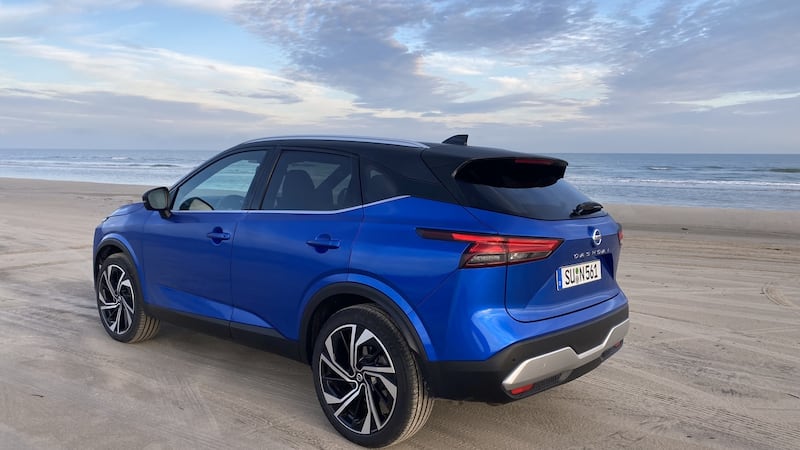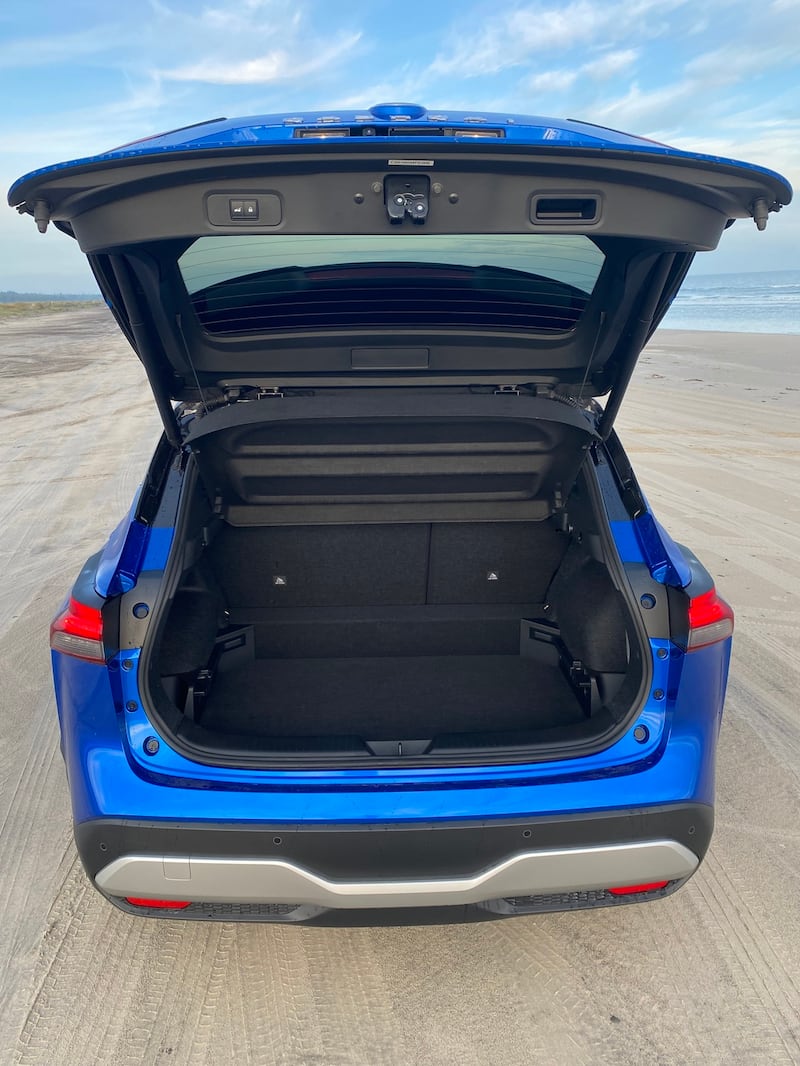Nissan faced a quandary with Qashqai – or as some in the motor trade dubbed it during its heyday, the Cashcow. How do you renew a best-seller without ruining the recipe of its success?
With this third generation of the Japanese brand’s most popular model, they’ve opted to add new tech, update the engine line-up and refresh the cabin, but retain the essential traits that made Qashqai such a hit for over 15 years.
Those traits are ingenious yet simple – like all the best ideas. Deliver SUV looks and feel without all the engineering of a regular off-roader. Nissan was the first to be frank about the driving habits of many SUV owners: they never go off-road. So, don’t waste time over-engineering a car for the Serengeti when it will spend its life on school runs.
However, is that still enough of an attraction in the face of a convoy of new electric crossovers hitting Irish roads (once the motor industry gets its act together and delivers some new cars to Ireland)? Up against the plug-in rivals, this pioneer of the high-set hatchback craze may seem a little old hat.
When it comes to the new Qashqai Nissan is sticking with fossil fuel for now, abandoning diesel but opting to back petrol power for the new third generation, albeit with hybrid electric support.
The first thing to note about the new Qashqai is the look, which is only slightly tweaked from the outgoing one. You’d need to be a Nissan aficionado to spot the difference between the two cars. In reality, it’s a little bit longer, taller and wider than before, but not enough to shock or surprise.
The biggest changes are in the cabin and under the bonnet. Inside the car, Nissan has opted for some new tech, with touchscreen controls of varying size, depending on trim options. There’s a lot of black plastic trim across the car, hard-wearing no doubt but not something that suggests either quality or premium, which is a pity because the fit and finish are top notch.



On the touchscreen controls, the graphics could be better, but the layout of menus along with the decision to keep the air-con switchgear separate suggests a practical approach was taken to the layout during design. They weren’t out to wow with futuristic fads but rather deliver functionality for frazzled family motorists who have enough going on in their lives without worrying where the menu for lane-keeping assist is hidden within the touchscreen menu.
Legroom in back
In the back, there’s room for adults to sit comfortably, though electric rivals do seem to deliver a lot more legroom and width these days. In the boot is a handy false floor that offers ample storage underneath.
The other big change is to the mechanics. Built on the Nissan-Renault alliance’s latest midsized platform, there’s a 1.3-litre four-cylinder petrol engine – either 138bhp or 156bhp – powering the car, with a 12V mild hybrid battery system to help tame the fuel economy. On paper it may seem a little small for this car, but on the road it proves its worth.
The greatest trait of the new 1.3-litre engine is its relative silence. We regularly set the automatic transmission into “manual mode” to drop down the gears so we could hit 4,000rpm. Despite numerous tests we never found the engine whining or making a fuss. Nissan has delivered some magic in terms of smothering engine noise, and the end result is a quiet and refined cabin even when the Qashqai is put to the limit.
Our test car was powered by the 156bhp version with a CVT auto transmission, which claimed a 0-100km/h time of 10.2 seconds and fuel economy of 6.4 litres per 100km (44mpg).
To make up for the lack of diesel, Nissan is introducing a new hybrid set-up called e-Power. Here, a 1.5-litre three-cylinder petrol engine is mated with an electric motor. What’s different to other hybrid systems is that in this case the power is delivered to the wheels entirely from the electric motor. The engine is there to provide this 140kW motor with power or to recharge a battery pack that also feeds the electric motor. The total output is set at 187bhp and comes in a two-wheel-drive format only.
Ride quality
The ride quality of the new Qashqai is perhaps less impressive, targeting comfort well but never really sparkling. It’s an easy car to drive without being engaging. That’s probably what the focus groups said they wanted, and the steering is certainly light enough for negotiating busy shopping centre car parks. Going back to the secret sauce from the 2006 Qashqai – why over-engineer a car that’s never going to be driven energetically?
Nissan has updated its cruise control system for this car, dubbed ProPilot. It manages to interpret changing traffic speeds well and recognises changing speed limits, while some versions also come with a decent self-steering set-up. It’s nothing new to the industry but nice to see on a regular family car.
That’s ultimately what the new Qashqai delivers; an incremental improvement at a time when the rest of the market is undergoing a revolution.
With prices starting at €30,500 for the 138bhp version with manual transmission and €36,700 for the 156bhp with CVT automatic transmission , it’s right in the mix with rivals, but some Irish buyers are likely to miss the diesel option, while we must wait until next year for the e-Power version to go on sale.
Nissan deserves kudos for its innovations of the previous decade. It created the crossover craze with Qashqai and delivered an affordable and impressive mainstream electric family car in the first-generation of Leaf.
Judged against that level of innovation, this Qashqai seems very conservative. Up against rivals, it’s certainly in the mix, but it’s not out in front.
LOWDOWN: NISSAN QASHQAI 1.3 MILD HYBRID PETROL
Power 1.3-litre 156bhp four-cylinder petrol engine with CVT automatic transmission and a 12V mild hybrid battery, delivering 270Nm of torque from 1,800rpm.
0-100km/h 10.2 seconds.
L/100km (mpg) 6.4 (44).
Emissions (motor tax) 144g/km (€270).
Price From €36,700 (starts at €30,500 for 138bhp version).
Verdict An incremental update to a best-seller that keeps it in the competition.















